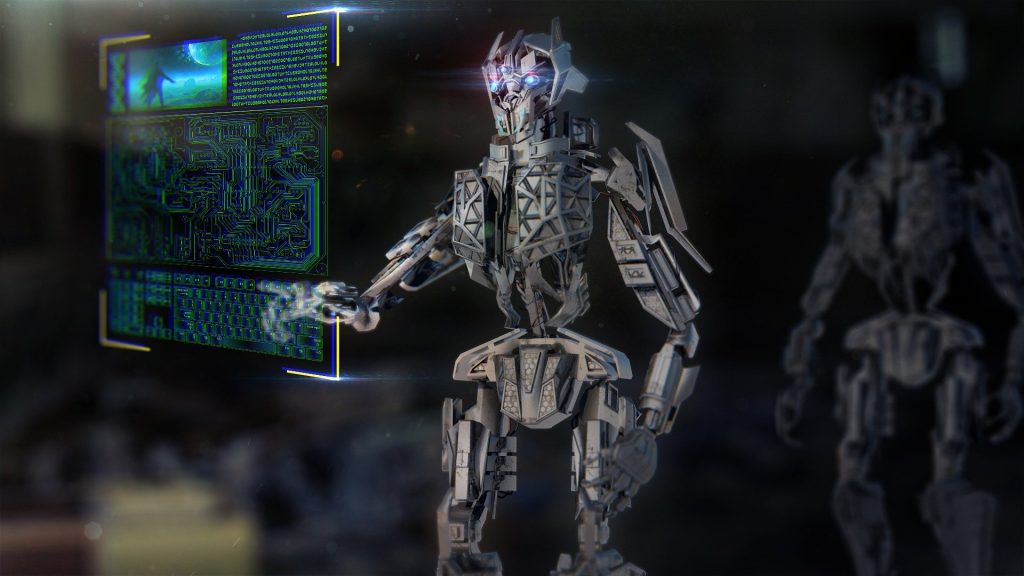What You Need to Know About Artificial General Intelligence (AGI)
Credit: Pixabay/CC0 Public Domain
These days, artificial intelligence (AI) is hard to miss—it’s in the news, featured in podcasts, and often the topic of casual conversations. A buzzword that’s making waves is artificial general intelligence (AGI), stirring up discussions and numerous questions.
What Exactly is AGI?
AGI raises many queries: Will it take away jobs or help solve major global issues? Will it align with our values or change them altogether? Are we headed towards a future that resembles “The Jetsons,” or are we looking at something closer to “The Terminator?” The answers are complex, shaped by how we define AI and what we want it to accomplish.
Meet Joe Sutherland, the first director of Emory’s Center for AI Learning, which aims to boost AI literacy. Last summer, he set out on a tour across Georgia to clarify what AI means and to help residents prepare for a tech-oriented future. Audiences ranging from professionals to students and lawmakers had several common questions.
Clearing Up AI Terminology
What’s the difference between AI, AGI, and artificial super intelligence (ASI)? The terms have evolved, leading to some misunderstandings. AI isn’t just one technology; it’s a collection of tools designed to automate tasks or replicate decision-making that typically requires human reasoning. We’re essentially giving machines the ability to make certain choices for us.
When people used to refer to AGI, they often imagined a being like Skynet from “The Terminator” or HAL from “2001: A Space Odyssey”—machines that could operate with free will and display human-like capabilities.
But now, some leading research teams define AGI as a system capable of performing at or above the level of human experts in various fields.
As for ASI, it describes what was once known as superintelligence, marking a stage where AI exceeds human cognitive abilities.
Do We Already Have AGI?
The answer varies with the definition. By the task-focused criteria from research labs, yes, we could say some forms of AI exist as AGI. AI excels in gathering and summarizing information, often reaching standards where humans would say, “That’s impressive.”
For instance, large language models like ChatGPT can outperform individuals taking the MCAT. However, that isn’t true intelligence; it’s akin to giving a student access to Google during an exam. Real AGI would demonstrate reasoning skills, not just data retrieval and pattern recognition.
Understanding the Difference: Reasoning vs. AI Capabilities
Today’s AI seems to reason but is merely conducting sequential searches for information and summarizing results. It lacks a true understanding of the world, predicting outcomes based solely on learned patterns. When tested on actual reasoning challenges like logic puzzles, these models usually struggle unless they’ve memorized the answers.
Consider humor, for example. Genuine humor dances between comfort and discomfort—qualities that can change over time. AI, however, merely regurgitates past content and fails to grasp this subtlety.
How Far are We from AGI?
If we stick to the older notion of AGI—like the one depicted in “The Terminator”—we’re not close. Current language models won’t help achieve AGI since they lack real reasoning and creativity. Developing new structures will be vital if we want to make progress.
One promising direction is the joint embedding predictive architecture (JEPA), which digs deeper into the connections between ideas instead of just stringing words together as LLMs do. This innovative approach aims to achieve more complex objectives.
The Potential and Risks of AGI
The existing technology is remarkable. It makes it possible for people to accomplish tasks in hours that used to take days. The upside lies in increased efficiency—tools that help organize research, support medical diagnoses, or assist with weekly shopping lists. These advancements can lead to higher earnings and better work-life balance.
The real danger isn’t the technology itself but a widespread lack of understanding about AI. We need to educate people so they can discern when AI is being used correctly and when it is not.
The Need for Oversight
It’s crucial to establish a framework that weighs the value of technology against the intellectual property that drives it, namely the data being used. Some companies argue that collecting people’s data without their consent is acceptable if it benefits society. This perspective is concerning.
If we ensure that the rights of those contributing to AI development are respected, it could lead to more innovation and effective use. Comprehensive testing is also necessary to identify shortcomings or biases in these models.
Can We Align AI with Our Values?
Ultimately, this question goes beyond technical aspects. During my talks around Georgia on AI in collaboration with the Rowen Foundation and Georgia Chamber of Commerce, an audience member asked how we can build AI models that reflect American values.
What makes America distinct is our appreciation for differing viewpoints. Since consensus is often elusive, we need to create a system with adaptable guardrails that respects evolving societal values while allowing for healthy debates and thoughtful decisions.
The Ideal Future with AGI
If we get AGI right, the future could see these technologies liberating us from mundane tasks, enabling us to focus on meaningful work and creative problem-solving.
At Emory, AI research is already reshaping healthcare, enhancing disease diagnoses and treatments. We’re analyzing public policy patterns to foster more efficient and equitable governance. Our scholars are also exploring how AI can safeguard individual rights and foster business growth.
Overall, AI could provide more benefits than drawbacks if we educate the public and involve them in the discussion so they can advocate for their interests and community. When applied thoughtfully, technology can amplify human abilities rather than replace them.


